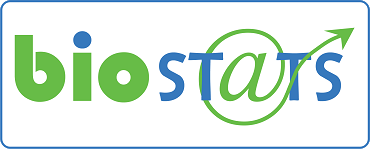bioST@TS, a web-based platform for teaching and learning numerical competency in biology.

Goal/purpose/product
bioCEED has created bioST@TS, a web-based learning platform (http://biostats.uib.no/) dedicated to helping biology students understand the basics of data management and statistical analysis. Directed towards both bachelor- and master students, bioST@TS provides tutorials and instructive videos that are relevant primarily, but not exclusively, for biology courses at University of Bergen (Norway) and at the University Centre in Svalbard (Norway).
Modules in bioST@TS focus on the following:
- Working in Excel
- Working in R
- Statistics in R
- Data visualization
- Data management
- Working and collaborating in Git/GitHub
bioST@TS is also a repository for resources created in collaboration with both teachers and students. These resources are then used as teaching materials in biology courses.
Innovative
Teaching
Teaching resources
Tutorials
Numerical competency
Web-based platform
Background
Over the past decades, there have been repeated calls to better align undergraduate biology education with the demands of society and with the development of modern biology as a scientific field (NRC 2003, AAAS 2011). A recurrent theme in these calls is that while biology as a science has transformed to an increasingly numerically- and quantitatively-based practice, the training students receive, is still largely in the descriptive and narrative roots of biology motivated by observing and discussing natural phenomena. Numerical and quantitative competence is highlighted in the influential ‘Vision and Change’ (AAAS 2011) report on biology education as a vital core competence within the discipline, as well as for STEM (Science, Technology, and Mathematics) in general. The lack of sufficient numerical and quantitative competences and skills have repeatedly been identified as a challenge for biology graduates entering the academic as well as the non-academic workforce (Gross 1994, Hastings and Palmer 2003, Blickley et al. 2013).
There are many initiatives that take up the Vision and Change (AAAS 2011) challenge to improve the numerical competence of biology graduates. Many programs require students to take mathematics and statistical courses as part of their degrees assuming that students then have the necessary skills before embarking on biology. However, empirical evidence show that simply having the background knowledge in an adjacent discipline is not sufficient; students need to learn to use the mathematical and quantitative skills in context (Fesner et al. 2013). Developing calculus courses specifically for biology is the obvious next-level solution (e.g., Stele & Kilic-Bahi 2008, Robeva et al. 2010), but such stand-alone modules have also be.
Community
bioST@TS is designed and built in collaboration with a community of biology teachers, teaching assistants and researchers with strong background and skills in biostatistics, and addresses the needs of biology students from the bachelor's degree to the doctoral degree.
Tools
A majority of the contents are originally made in R/RStudio using Rmarkdown for consistent layout- and page production, and shared in GitHub. Pages are published on a WordPress website hosted at the University of Bergen.
The main website is available at https://biostats.uib.no/, and the GitHub repository may be found here
Supplementary materials
References
Numerical competence and quantitative skills for BScstudents in biology S. Eliassen, J. Kolding, J. Smedmark, and V. Vandvik, MNT-konferansen 2017, 30.-31. mars, Oslo
American Association for the Advancement of Science (AAAS) 2011. Vision and change in undergraduate biology education: a call to action. AAAS, Washington, DC, USA.
Gross L. 1994. Quantitative training for life-science students. Bioscience 44: 59
Hastings A., Palmer M.A. 2003. Mathematics and biology: a bright future for biologists and mathematics? Science 299: 5615.
Blickley J.L., Deiner K., Garbach K., Lacher I. Meek M.H., Porensky L.M., Wilkerson M.L., Winford E. Scwartz M.W. 2013. Graduate Student’s Guide to Necessary Skills for Nonacademic Conservation Careers. Conservation Biology 27: 24–34.
